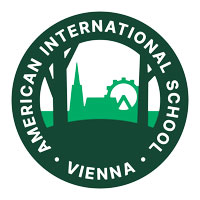A Diverse Student Body
A community of students with a wide range of backgrounds, cultures, and perspectives will contribute to a rich and inclusive educational environment.
Most students in international schools come from different countries around the world. Selecting a genuinely diverse international school proves to be an exceptional decision, offering your child exposure to a wide array of cultures and languages. Regardless of their origin, children can celebrate their unique heritage while interacting with peers from around the world, making cultural and linguistic diversity especially appealing for parents seeking a global education. Beyond the exposure to diverse cultures and languages, a school that embraces diversity provides various benefits, instilling values like tolerance, empathy, and kindness.
In this multicultural environment, children interact with peers and educators from varied backgrounds, fostering a global perspective early on. This experience helps them understand their role in a larger community and recognize the collective impact of their actions. Diverse schools prioritize inclusivity, creating a secure and supportive environment where every child can flourish. The emphasis on creativity, critical thinking, and open-mindedness prepares students for success in a global society, instilling the importance of respect and acceptance. Children learn to embrace differences, identify similarities, and cultivate positive relationships for navigating an ever-changing world. Here are some key takeaways from international schools that embrace diversity
-
Fostering creativity and collaboration.
In today's global society, skills like teamwork and creativity are crucial. Growing up in a multicultural setting exposes students to diverse ideas and perspectives, fostering curiosity and collaboration. Children learn firsthand that problem-solving is most effective when working with others. Strong intercultural awareness is also linked to higher academic performance, as students regularly encounter varied ideas, concepts, and beliefs.
- Connecting children with their culture.
Concerns about children losing their cultural identity are alleviated in a diverse school environment. The inclusive atmosphere allows children to freely celebrate their unique heritage while learning about others. Students are actively encouraged to share their culture, use their home language, and discover commonalities with their peers. Diverse schools, emphasizing tolerance and respect, create a supportive environment where every child feels valued and secure.
- Cultivating empathy, kindness, and respect.
In a multicultural setting, children encounter diverse customs, beliefs, languages, foods, and religions daily. These firsthand experiences teach them to respect and accept people with differences. Celebrating school diversity provides unique opportunities for children to participate in cultural events, try different foods, and engage in new traditions, enhancing their ability to connect with classmates through shared experiences. Over time, this strengthens social and emotional skills, including communication, leadership, teamwork, and collaboration.
- Fostering international-mindedness.
Encouraging international-mindedness is a central goal of the International Baccalaureate (IB) programs, especially in the IB Primary Years and IB Middle Years. This concept involves viewing oneself as part of a global community and recognizing a responsibility to its members. In a diverse school environment, the curriculum transcends specific countries or nationalities, deliberately cultivating a broader worldview. Children engage in discussions on global issues and celebrate cultural traditions, fostering an understanding that they play a role in a larger community and can contribute to making the world better for others. Exposure to various perspectives on complex global issues teaches critical thinking and consideration for the well-being of others.
A Diverse Teaching Staff
International Schools bolster a workforce from various backgrounds. Students are able to gain a well-rounded education thanks to a variety of teachers.
Every educator working internationally inherently embodies diversity, bringing unique experiences and perspectives. The presence of foreign teachers not only offers students the chance to interact with individuals from diverse countries and cultures but also introduces a valuable array of experiences stemming from varied gender, sexuality, racial, ethnic, or cognitive backgrounds, collectively contributing to a more interconnected and enriched global understanding.
International schools that encompass a varied and inclusive community offer numerous advantages to students, such as:
- Deepening cultural awareness and compassion.
- Introducing students to a range of perspectives and experiences.
- Cultivating environments of inclusivity.
- Augmenting cognitive development and problem-solving abilities.
A Multilingual Environment
International Schools offer the option of learning several languages while keeping English as their main language of instruction.
In international schools, English serves as the primary medium of instruction, ensuring that students conclude their primary education with a remarkable command of the language.
This requires the teachers to possess fluency in English to effectively teach their assigned subjects, with tests also being conducted in the same language. The exception lies in language courses, where many international schools provide instruction in languages like Chinese, French, and German, sometimes making it mandatory for students to enroll in at least one additional language class for bilingual proficiency. Speaking several languages is key for communicating with the global world.
An Internationally Recognized Curriculum
An internationally-oriented curriculum will provide your children with education and credentials that hold global recognition. This also ensures a smooth transition between schools if you relocate to another city or country.
International schools provide a diverse array of curriculum options, often influenced by the school's national identity. For institutions welcoming students of various nationalities, the usual choices include International Baccalaureate (IB), Cambridge International as well as American and British curricula. Occasionally, international schools may present hybrid alternatives that combine elements from various curricula. Each curriculum type shapes the school's culture distinctively, underscoring the importance of comprehending the distinctions among them. Regardless of the curriculum, accreditation is a vital element in ensuring the quality of any international school.
International Baccalaureate (IB)
The International Baccalaureate (IB) is a widely recognized and rigorous global curriculum adopted by numerous schools worldwide. Originally developed in Switzerland in the 1960s with a focus on students living outside their home culture, it has evolved into a means of nurturing globally minded students. Schools that implement any or all of the four IB programmes, namely:
- Primary Years Programme (PYP)
- Middle Years Programme (MYP)
- Diploma Programme (DP)
- Career-related Programme (CP)
are designated as IB World Schools. These programmes, spanning different age groups, provide a seamless educational progression, with students choosing either DP or CP at age 16 to complete their studies.
The successful completion of the DP, a comprehensive two-year course, is pivotal for students seeking university admission. Attaining a DP diploma entails fulfilling requirements in six key areas, including written assessments, an extended essay, and 150 hours of community service, among other coursework. Alternatively, students may opt for the CP, a specialized programme designed for those with specific career goals, offering personal and professional development skills along with focused instruction in areas such as business, technology, or arts. Despite its relative novelty, the CP is regarded as an equivalent university admission qualification to the DP.
Known for its academic rigor, the IB curriculum, especially the DP, provides a challenging academic experience that effectively prepares students for university. In contrast to the British national A-levels, the DP requires students to study six different subject areas, contributing to its reputation for high standards. However, some students may find the program demanding, and completion of the diploma can be challenging. Schools aiming to teach IB programmes must be authorized by the International Baccalaureate Organization.
Cambridge International
The Cambridge International Programme (CIE) is a widely recognized and challenging curriculum used by schools worldwide. Originally established in the UK, it has become crucial for fostering a global perspective among students. Schools that incorporate any of the Cambridge programs, such as Cambridge Primary, Cambridge Lower Secondary, Cambridge Upper Secondary (IGCSE), and Cambridge Advanced (A Levels), are designated as Cambridge International Schools. These programs cater to different age groups, ensuring a comprehensive educational journey. At the upper levels, students can pursue Cambridge Advanced studies, completing the internationally recognized Cambridge International A Levels.
Completing Cambridge A Levels, typically spanning over two years, is vital for students aiming for university admission. Attaining A Level qualifications involves excelling in subject-specific exams and coursework. In addition to A Levels, the Cambridge Advanced program also offers Cambridge Pre-U, an alternative qualification accepted for university entry.
Known for its academic rigor, the Cambridge International Programme provides a strong educational foundation, effectively preparing students for university studies. In contrast to some national curricula, Cambridge A Levels require mastery of a diverse range of subjects, contributing to its reputation for high academic standards. While challenging, the program offers comprehensive and internationally respected qualifications.
Schools looking to implement Cambridge programs must obtain authorization from Cambridge Assessment International Education.
American Curriculum
The American Curriculum for International Schools, originating in the United States, is widely adopted globally for its comprehensive educational framework. Schools incorporating the following components are recognized as American International Schools:
- Elementary School Curriculum (Grades K-5)
- Middle School Curriculum (Grades 6-8)
- High School Curriculum (Grades 9-12)
This multistage curriculum caters to a spectrum of age groups, facilitating a fluid educational progression.
At the high school level, students typically pursue the American High School Diploma, awarded based on a credit system with elective courses. Attaining this diploma is crucial for those eyeing admission to U.S. or internationally recognized universities. The curriculum also offers Advanced Placement (AP) courses, providing college-level content and potential college credits.
Known for flexibility and a well-rounded focus, the American Curriculum readies students for higher education. Unlike some national curricula, it allows exploration of diverse subjects while maintaining high academic standards. Schools implementing this curriculum often adhere to accreditation standards set by organizations like the Middle States Association of Colleges and Schools. This ensures educational excellence and adherence to global standards in recognized American International Schools.
British Curriculum
The British Curriculum for International Schools, often referred to as the British International Curriculum, is a widely respected educational framework adopted by schools worldwide. Originating in the United Kingdom, it has become a cornerstone in delivering a rigorous and globally recognized education. Schools that incorporate any or all of the British curriculum components are designated as British International Schools, including
- Early Years Foundation Stage (EYFS)
- Key Stage 1 and 2 (Primary)
- Key Stage 3 (Lower Secondary)
- Key Stage 4 (IGCSE)
- Key Stage 5 (A Levels)
These stages cover various age groups, ensuring a coherent educational progression. At the upper levels, students often pursue Advanced Level (A Level) studies, completing examinations in subjects of their choice.
The successful completion of A Levels is pivotal for students aspiring to secure university admission in the United Kingdom or other international institutions recognizing this qualification. A Levels involve specialized subject examinations and coursework, providing a comprehensive and in-depth understanding of chosen disciplines.
Renowned for its academic depth and emphasis on critical thinking, the British Curriculum for International Schools prepares students effectively for tertiary education and beyond. Unlike some national curricula, the British system allows students to specialize in their chosen subjects, fostering a deep understanding and mastery of their academic interests. The British curriculum maintains high academic standards, ensuring students are well-prepared for the challenges of higher education. Schools intending to implement the British curriculum often adhere to accreditation standards set by organizations like the British Schools Overseas (BSO).
World Class Facilities
From theaters to laboratories, soccer fields to basketball courts, international schools boast contemporary facilities supporting both core academic training and extracurricular pursuits.
School facilities in international schools are typically well-equipped and modern, encompassing a broad spectrum of amenities to support both academic and extracurricular activities.
The continuous financial investment in these facilities ensures proper maintenance and timely upgrades, contributing to a positive educational experience. Additionally, international schools often maintain smaller class sizes, fostering a more personalized and interactive learning atmosphere.
Extracurricular Activities
International schools offer students many diverse opportunities to acquire new skills and experiences that extend beyond the standard curriculum. In addition to the core academic program, many of these schools provide extracurricular activities such as sports, music, dance, technology, and more, often available as part of their after-school programs.
International schools extend several after-school activities beyond the core curriculum, encompassing Fine and Performing Arts such as choirs, bands, orchestras, private instrumental tuition, dance, drama, painting, drawing, ceramics, craft, design, film, and photography. Clubs catering to diverse interests, including debating, cooking, speech, and Model United Nations, are readily available for student participation. Moreover, these schools facilitate a broad range of extracurricular experiences, including academic travels and trips throughout the year, both locally and internationally, fostering crucial out-of-classroom experiences that significantly contribute to team building among students.
Such opportunities are often unparalleled in traditional school settings. In addition to academic pursuits, international schools emphasize physical fitness and healthy lifestyles, offering sports teams for competitive events against other schools and a diverse array of recreational sports to accommodate varied interests. Leading international schools present numerous sports options, with non-Competitive sports providing a welcoming and positive environment for students to explore and develop skills across various sports.




